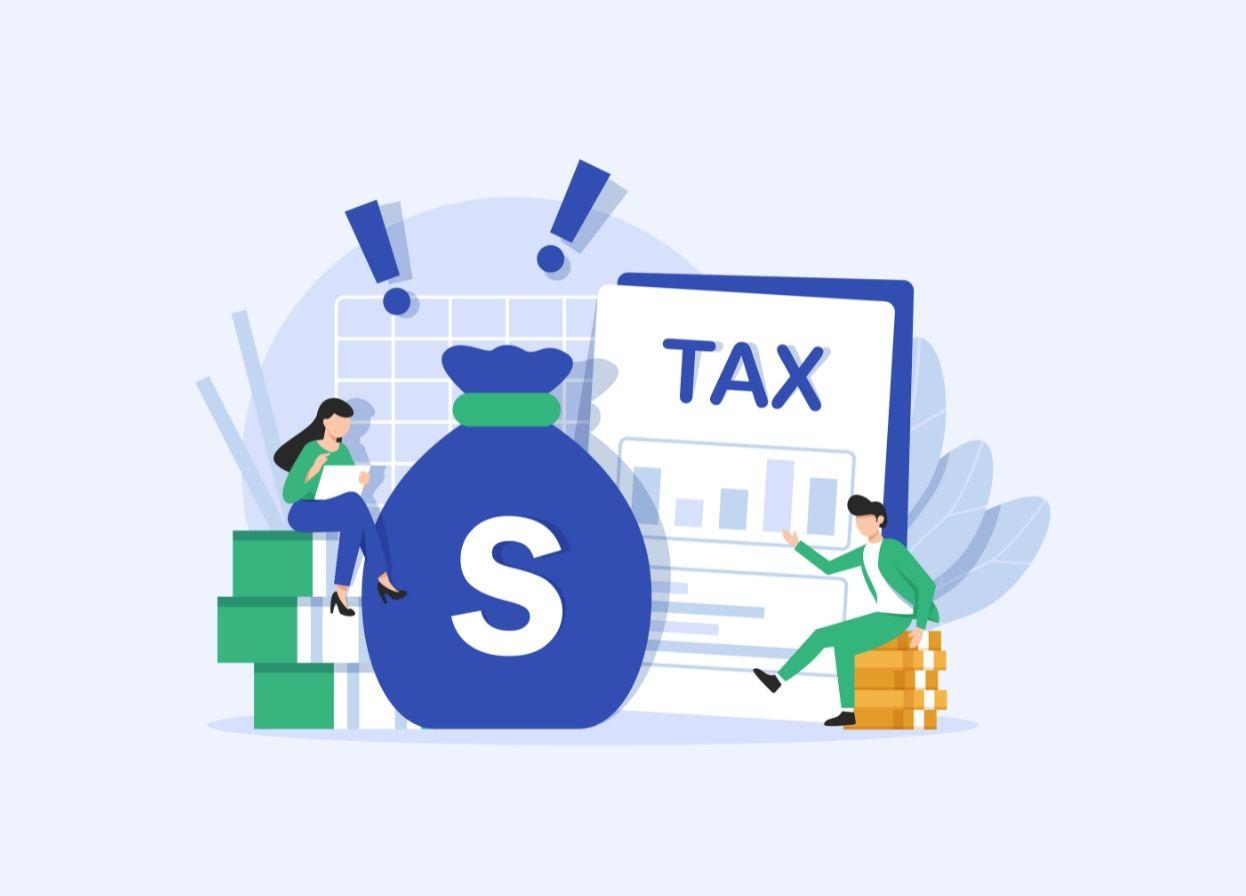Types of Accounting Documents for IT Service Providers
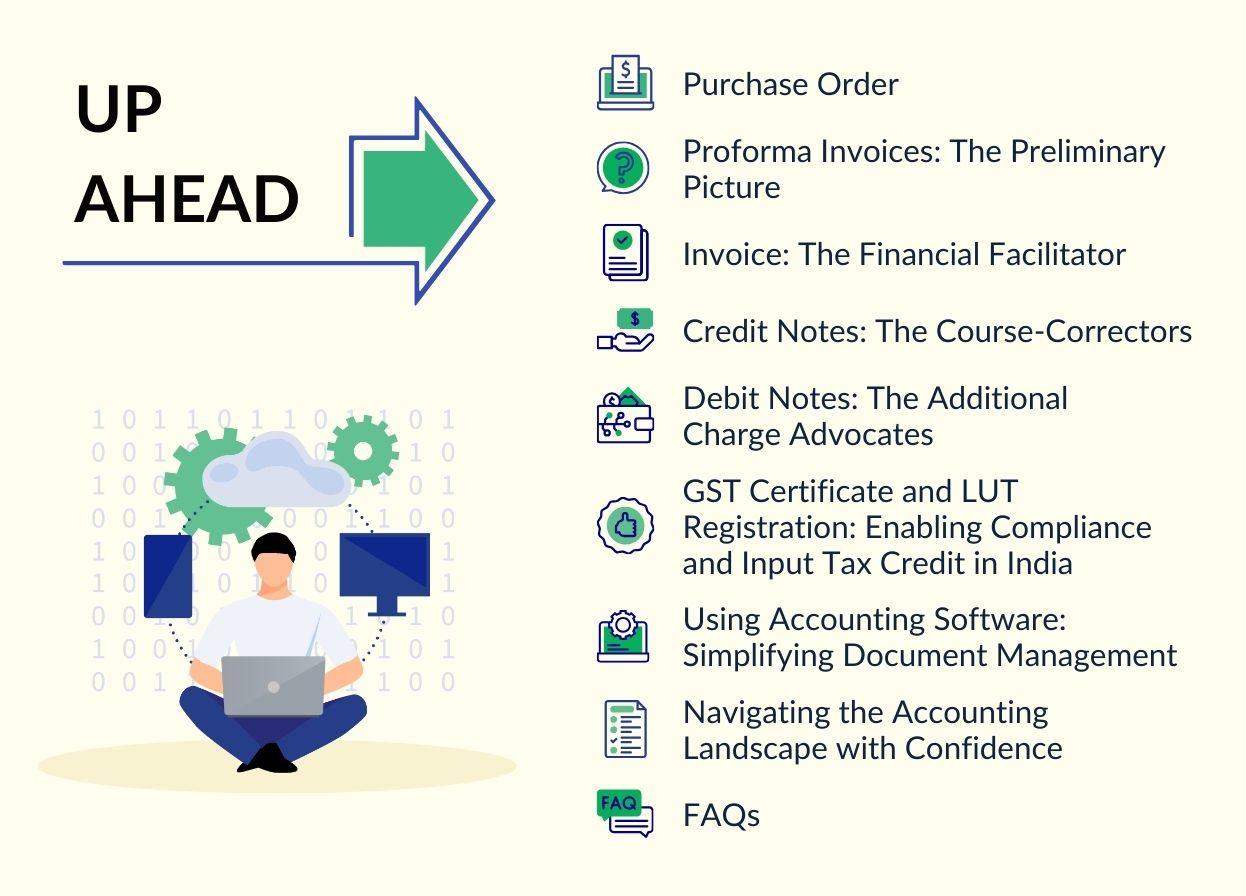

In the dynamic world of Information Technology (IT) services, success relies on technical expertise and robust financial management. IT service providers must have a firm grasp of the required accounting documents. This paperwork encapsulates critical financial information, facilitating precise decision-making and ensuring compliance with tax regulations. They are the backbone of economic health, enabling IT service providers to set sail confidently towards success.
Purchase Order
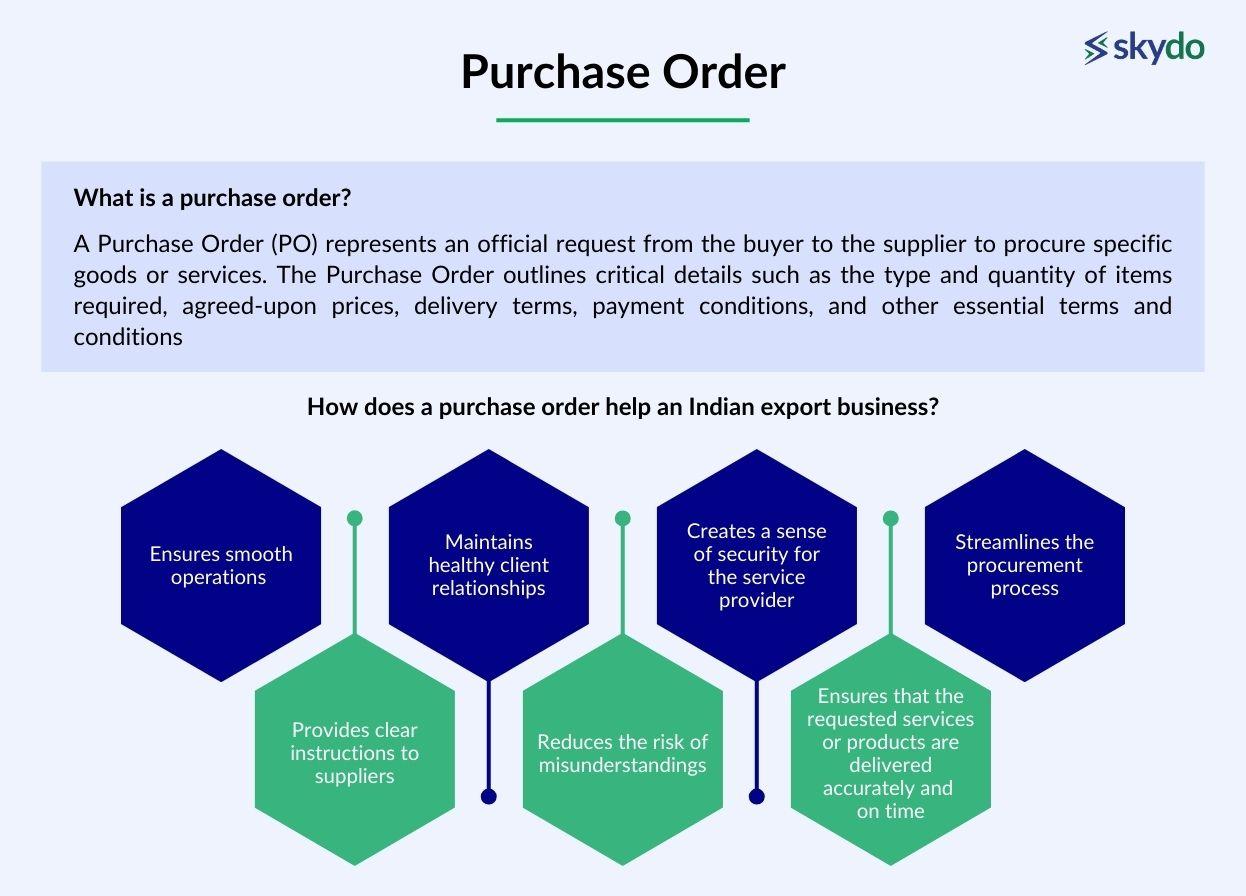
A Purchase Order (PO) represents an official request from the buyer to the supplier to procure specific goods or services. The Purchase Order outlines critical details such as the type and quantity of items required, agreed-upon prices, delivery terms, payment conditions, and other essential terms and conditions.
For an IT services export company, purchase orders are focal in ensuring smooth operations and maintaining healthy client relationships. When an IT export service provider receives a purchase order from a client, it acknowledges the client's commitment to acquiring the specified services. Therefore, it creates a sense of security for the service provider, as the terms now bind the client.
Moreover, IT service industry purchase orders help streamline the procurement process. They provide clear instructions to suppliers, reducing the risk of misunderstandings and ensuring that the requested services or products are delivered accurately and on time. Using purchase order software like ControlHub further enhances this process by automating order management, tracking, and documentation, saving valuable time and reducing errors.
Proforma Invoices: The Preliminary Picture
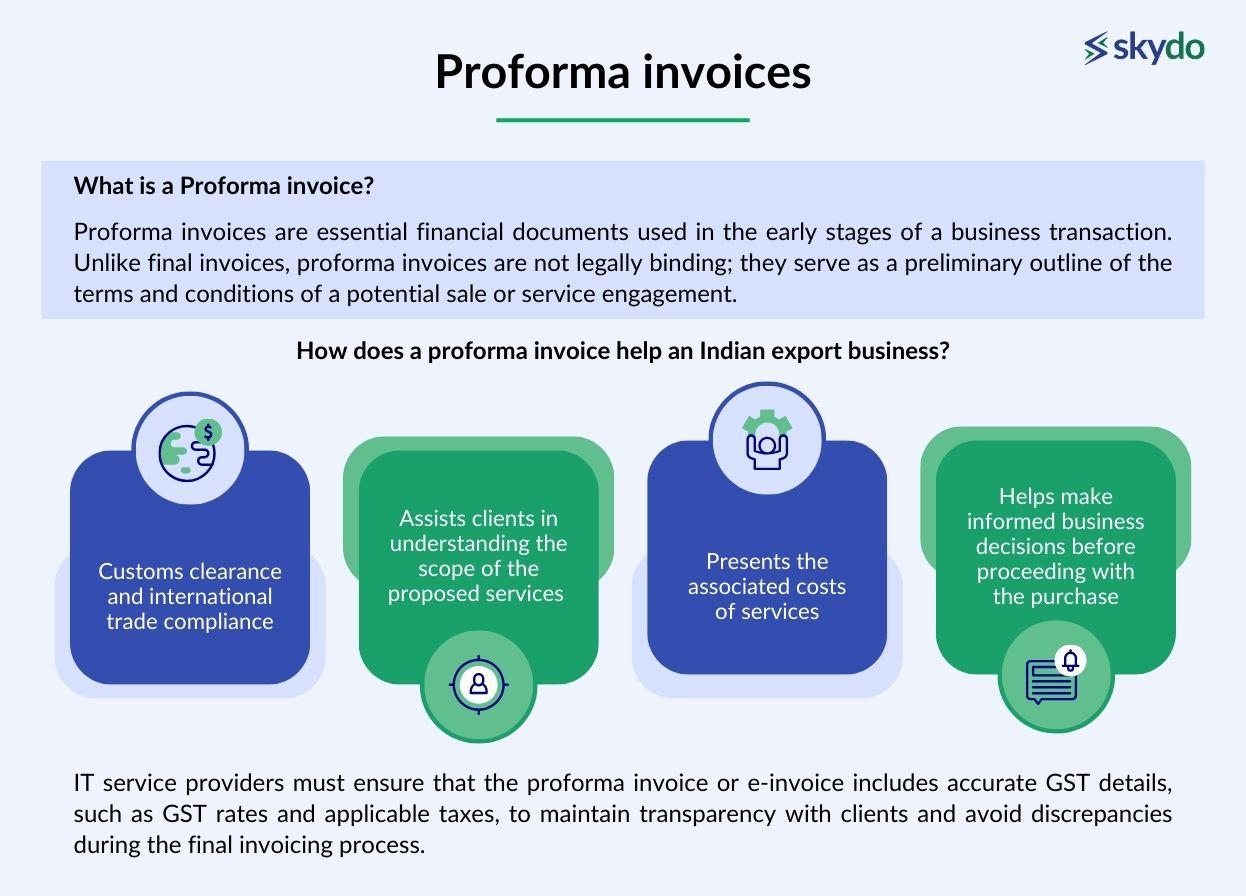
Proforma invoices are essential financial documents used in the early stages of a business transaction. Unlike final invoices, proforma invoices are not legally binding; they serve as a preliminary outline of the terms and conditions of a potential sale or service engagement. These invoices provide buyers with an estimate of the costs involved before the actual transaction.
These invoices are crucial in IT services, particularly in cross-border transactions. When dealing with international clients, proforma invoices become invaluable for customs clearance and international trade compliance. They assist clients in understanding the scope of the proposed services and the associated costs, enabling them to make informed decisions before proceeding with the purchase.
Many founders and business owners may find this aspect confusing. The timeline to share proforma invoices is before the goods are delivered or commenced services. They prelude the final transaction, giving clients sufficient time to review and confirm their orders.
Although proforma invoices are not considered official tax documents, they can impact GST compliance. IT service providers must ensure that the proforma invoice or e-invoice includes accurate GST details, such as GST rates and applicable taxes, to maintain transparency with clients and avoid discrepancies during the final invoicing process.
Invoice: The Financial Facilitator
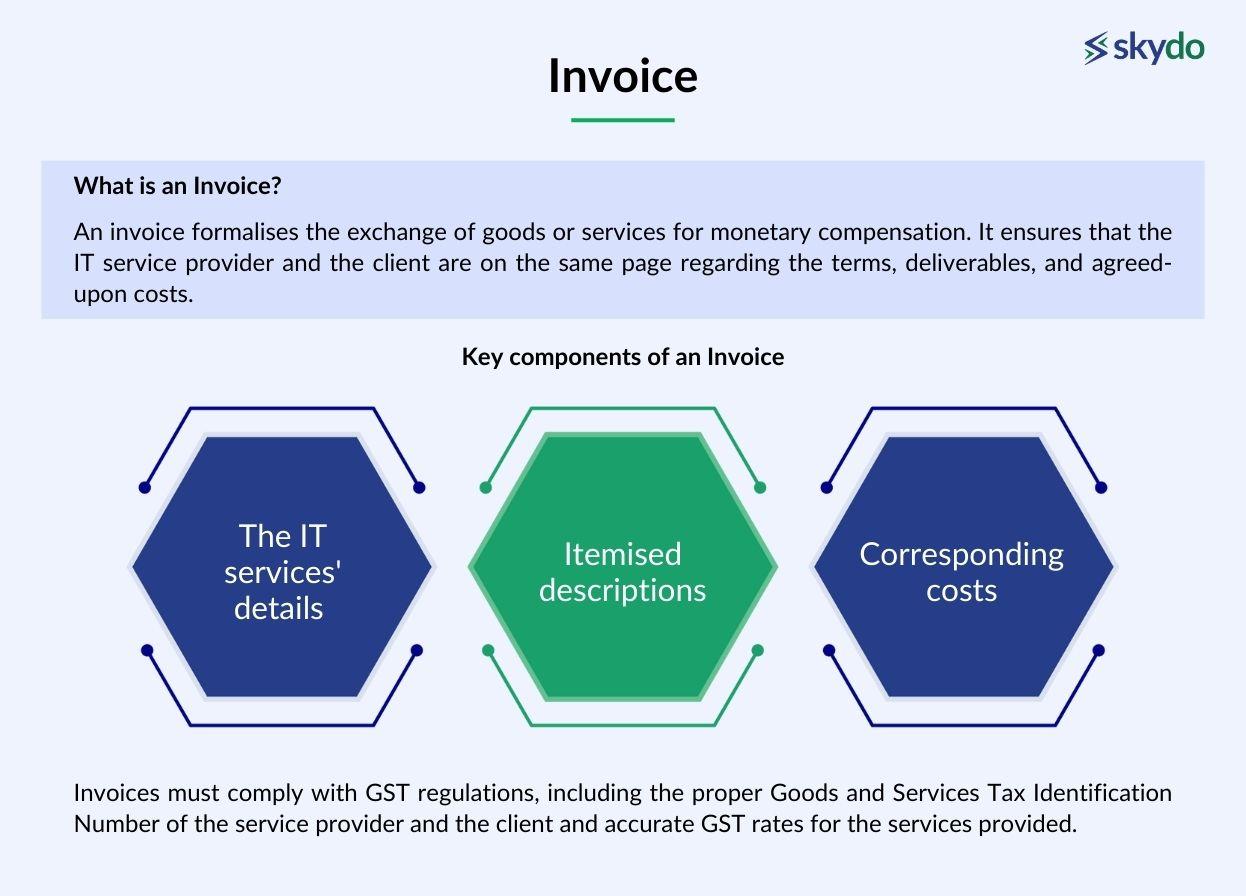
An invoice is crucial in the IT service industry because it formalises the exchange of goods or services for monetary compensation. It provides concrete evidence of a completed transaction. It ensures that the IT service provider and the client are on the same page regarding the terms, deliverables, and agreed-upon costs.
An effective invoice should include several key components: the IT services' details, with itemised descriptions and corresponding costs. Additionally, the invoice or e-invoice should specify the payment terms, such as due date and accepted payment methods, to facilitate timely payments and cash flow management.
For IT service providers, revenue recognition is decisive for accurate financial reporting and decision-making. Invoices mark the point of revenue recognition, indicating the delivery of services or milestones achieved.
For Indian IT service providers, GST is a significant factor in financial transactions. Invoices must comply with GST regulations, including the proper Goods and Services Tax Identification Number of the service provider and the client and accurate GST rates for the services provided.
Credit Notes: The Course-Correctors
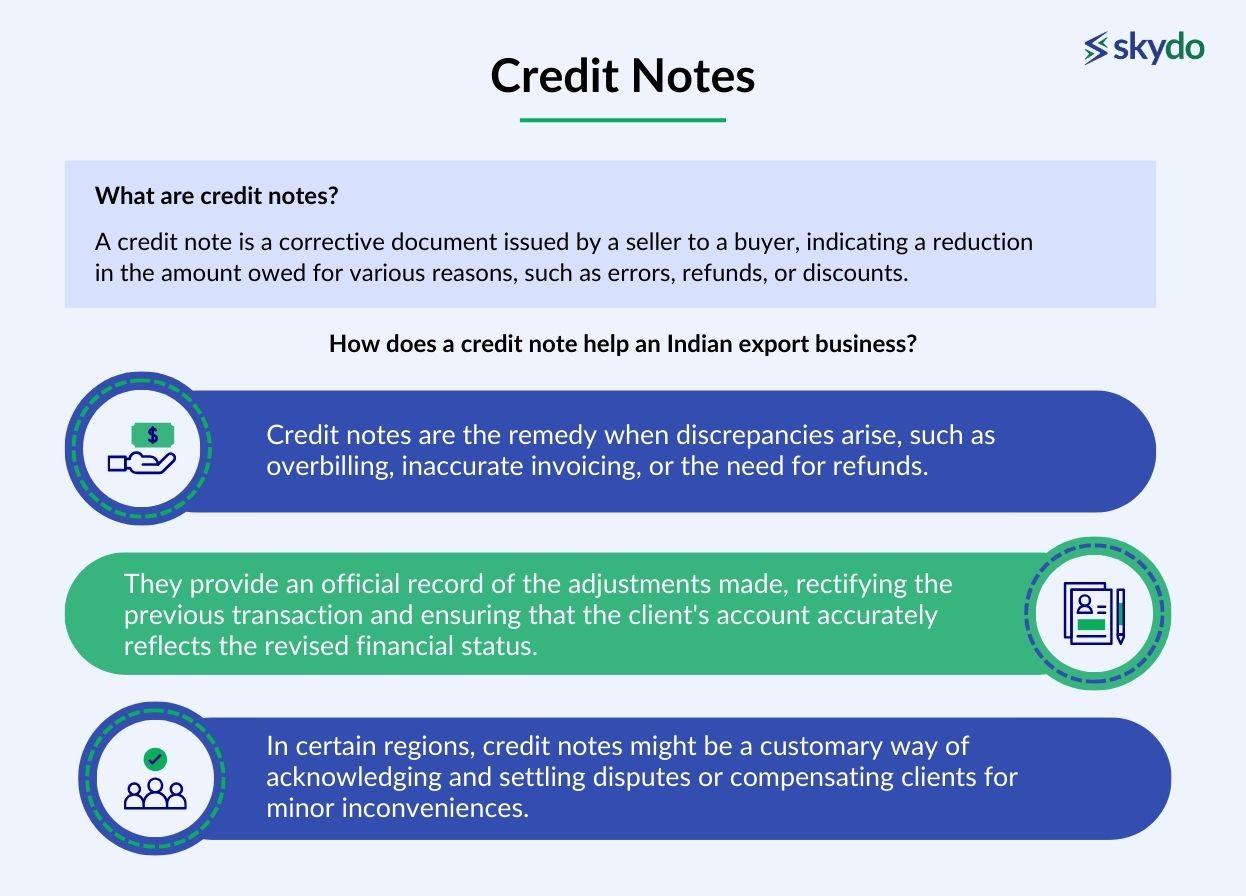
A credit note is a corrective document issued by a seller to a buyer, indicating a reduction in the amount owed for various reasons, such as errors, refunds, or discounts.
In IT services, credit notes are the remedy when discrepancies arise, such as overbilling, inaccurate invoicing, or the need for refunds. They provide an official record of the adjustments made, rectifying the previous transaction and ensuring that the client's account accurately reflects the revised financial status.
By issuing timely credit notes, IT service providers also demonstrate transparency and a commitment to rectifying errors promptly. It fosters a sense of trust and reliability. Credit notes may hold unique significance in local or street-level business practices.
In certain regions, credit notes might be a customary way of acknowledging and settling disputes or compensating clients for minor inconveniences.
Debit Notes: The Additional Charge Advocates
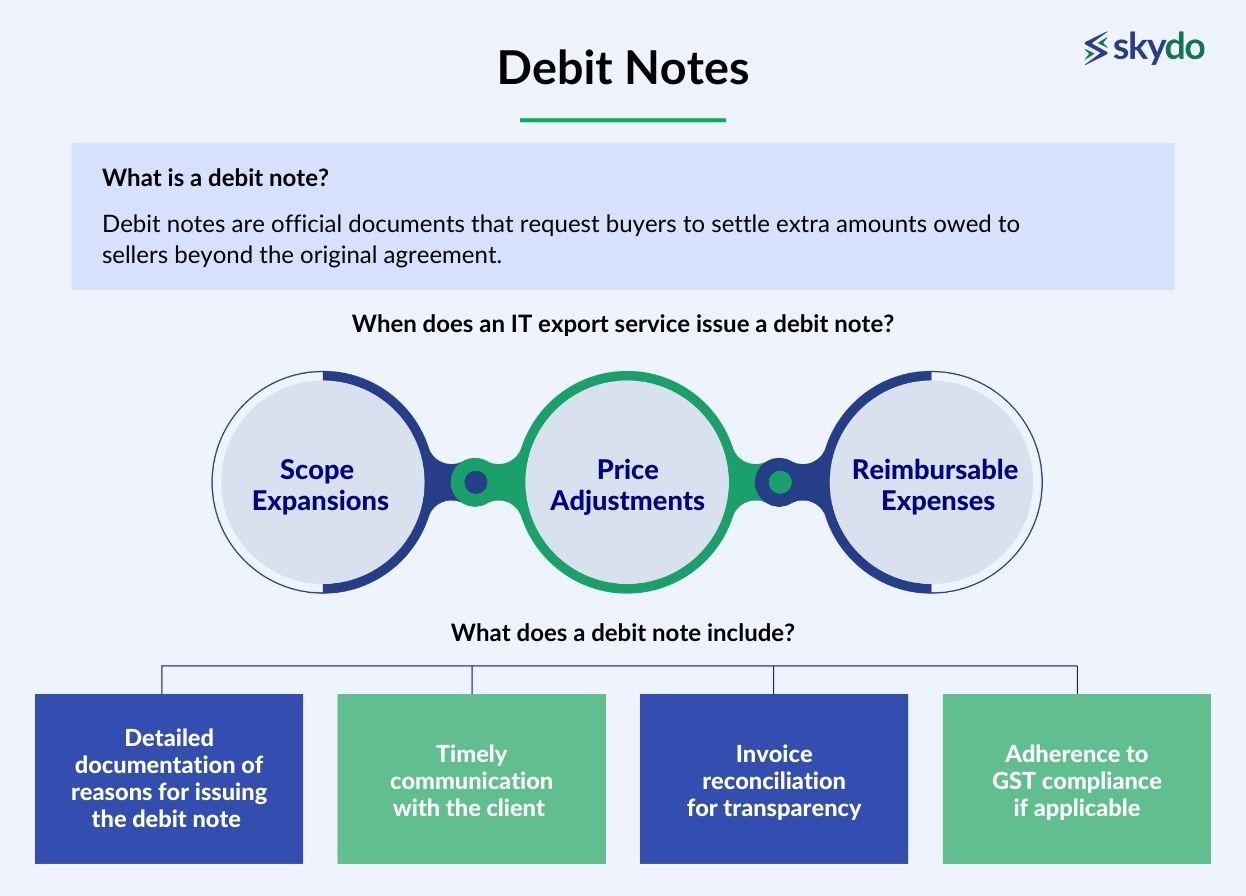
Debit notes are official documents that request buyers to settle extra amounts owed to sellers beyond the original agreement. IT service providers issue debit notes in various scenarios, such as scope expansions, price adjustments, and reimbursable expenses.
Proper accounting measures for debit notes include detailed documentation of reasons for issuing the debit note, timely communication with the client, invoice reconciliation for transparency, and adherence to GST compliance if applicable.
GST Certificate and LUT Registration: Enabling Compliance and Input Tax Credit in India
Under the GST regime, the GST Certificate and Letter of Undertaking or LUT Registration play crucial roles in this system. The GST Certificate is issued upon successful GST registration, confirming an entity's eligibility to collect GST from customers and claim Input Tax Credit (ITC) on eligible purchases.
Accurate document usage is paramount in claiming ITC, as any discrepancies may lead to rejections or potential penalties.
For businesses engaged in exports, the LUT is indispensable. It allows exporters to supply goods or services without paying GST upfront and is valid for a specified period. By avoiding upfront tax payments, businesses can improve cash flow and competitiveness in the global market.
Understanding its importance and compliance requirements is crucial for businesses to optimise GST benefits and thrive in the Indian marketplace.
Using Accounting Software: Simplifying Document Management
From invoices and purchase orders to credit and debit notes, accounting software automates it all, saving time and reducing errors. Centralising data ensures seamless document retrieval and secure storage, promoting efficient record-keeping.
When selecting accounting software, consider features like customisable templates for invoices and purchase orders, real-time data syncing, and automated reminders for due payments. Advanced software can integrate with tax systems, simplifying GST compliance by automatically calculating taxes and generating accurate reports.
By utilising reliable accounting software, businesses can streamline document management, maintain regulatory compliance, and gain a competitive edge in today's fast-paced financial landscape.
Navigating the Accounting Landscape with Confidence
In financial management, understanding the significance of different accounting documents is the compass that guides IT service providers towards success.
By grasping the roles of these documents, IT service providers can maintain healthy client relationships, ensure accurate financial reporting, and optimise tax benefits. Utilising accounting software further simplifies document management, promoting efficiency and compliance.
Frequently Asked Questions
Q1. What are source documents in accounting?
Ans: Source documents in accounting are the original records that provide evidence of a transaction. These documents are the foundation for accounting entries and include invoices, receipts, bank statements, and contracts.
Q2. What are the 5 source documents in accounting?
Ans: The five main source documents in accounting are invoices, receipts, checks, purchase orders, and credit memos. These documents substantiate financial transactions and are crucial for accurate record-keeping.
Q3. What are business documents in accounting?
Ans: Business documents in accounting encompass a wide range of records, including source documents and internal documents like financial statements, ledgers, and journals. They collectively form the documentation trail that supports the business’ economic activities and decisions.





